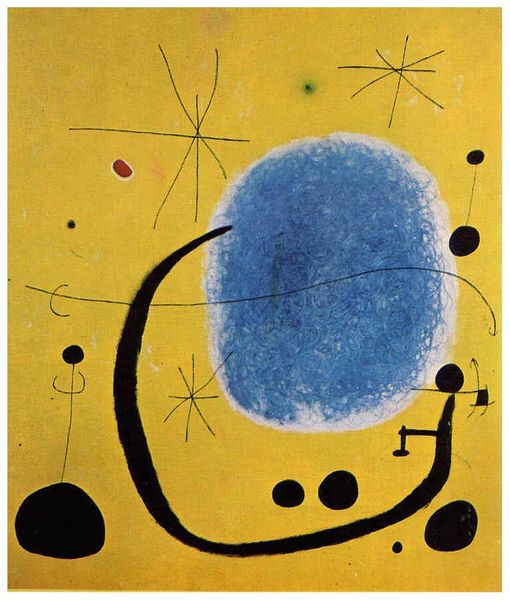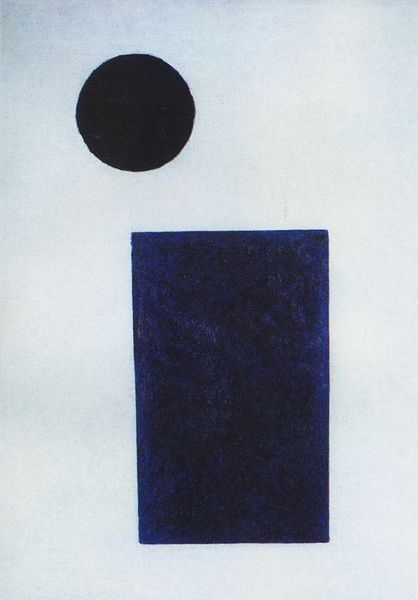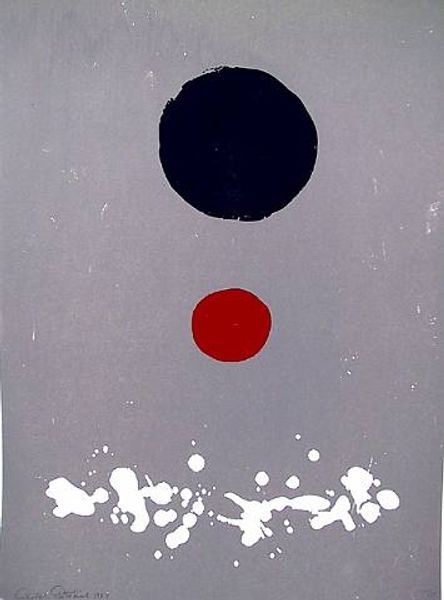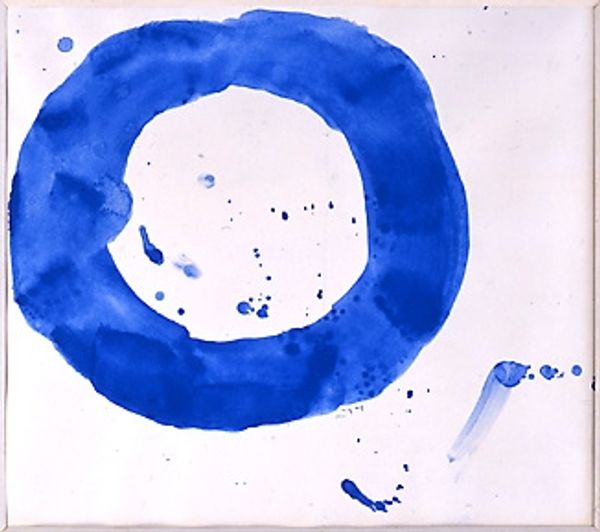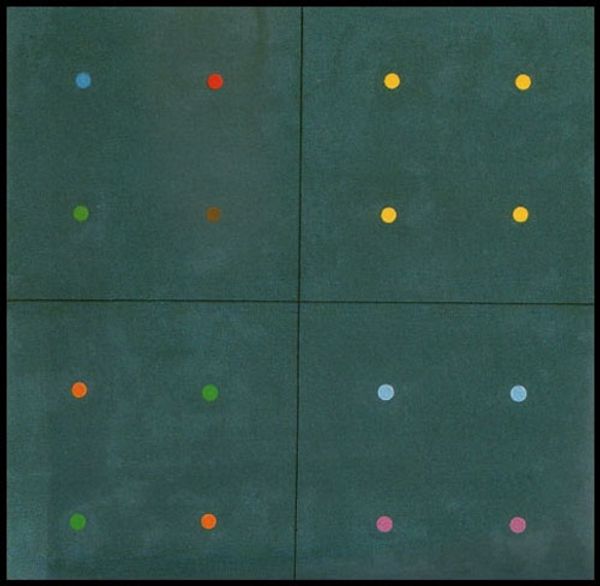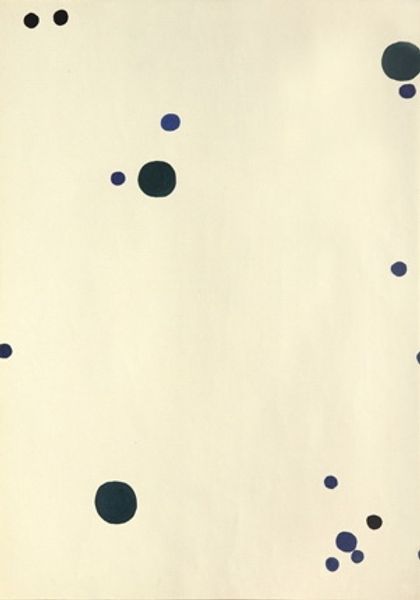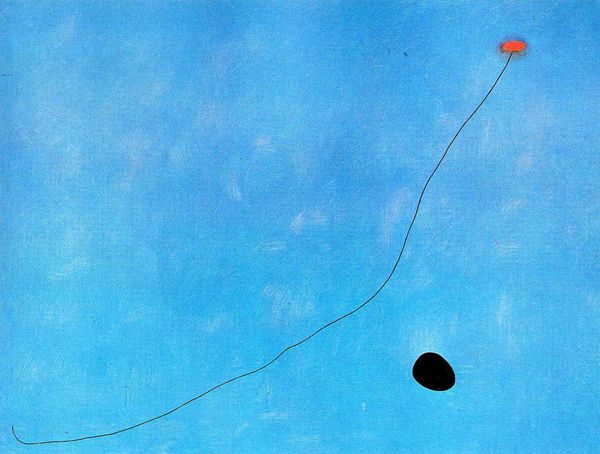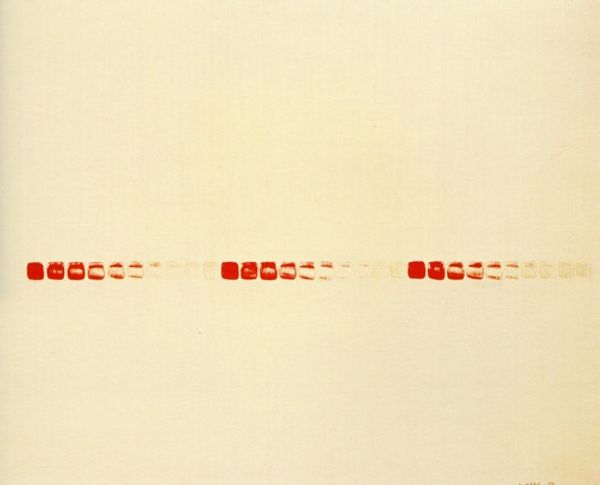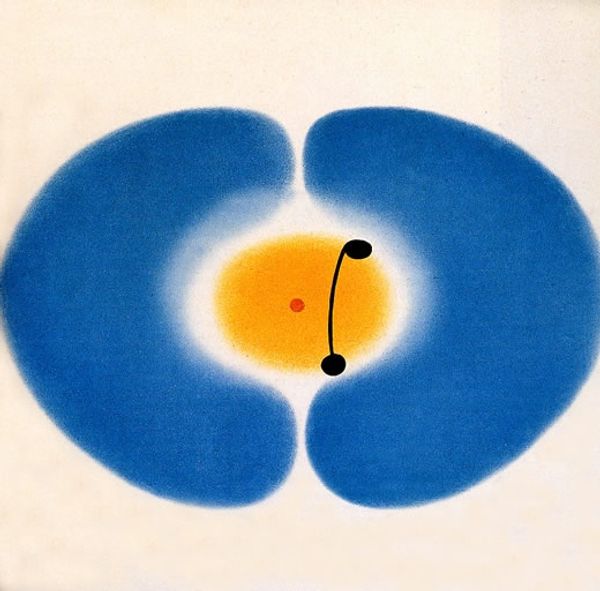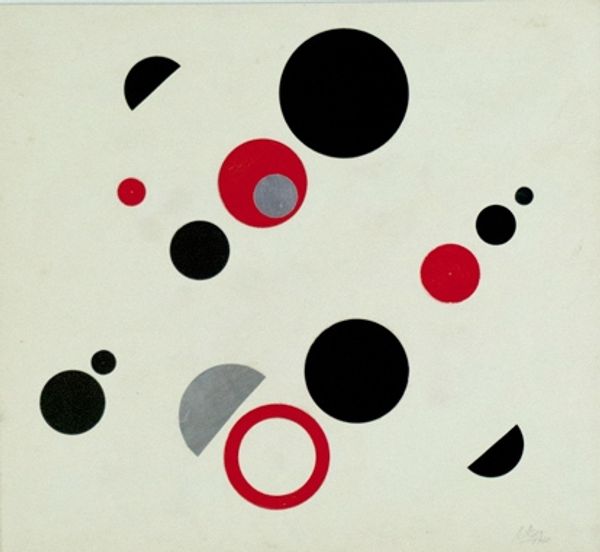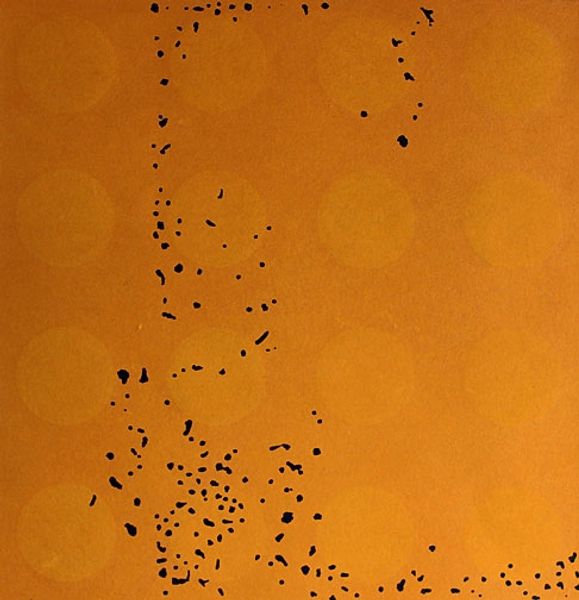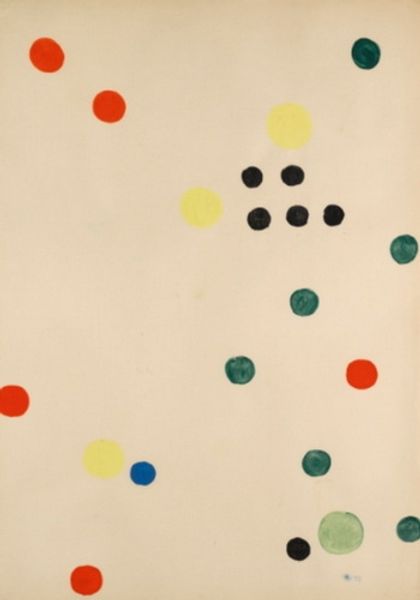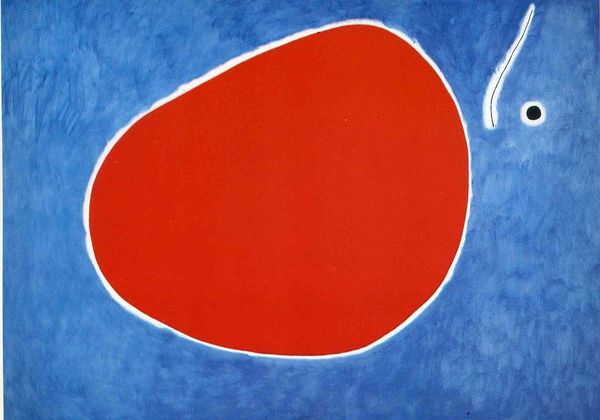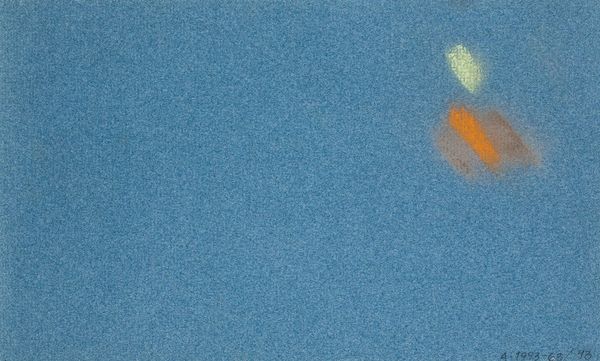
painting, acrylic-paint
#
negative space
#
blue and white
#
painting
#
acrylic-paint
#
form
#
geometric
#
abstraction
#
line
#
surrealism
Dimensions: 270 x 355 cm
Copyright: Joan Miro,Fair Use
Curator: This is Joan Miró's "Blue II," painted in 1961. It’s currently held at the Georges Pompidou Center in Paris. What are your initial impressions? Editor: A profound sense of serenity, actually. The expanse of that blue. It almost feels like falling into the sky. And those stark shapes—simple but arresting. Curator: Indeed. The use of negative space here is compelling. It defines the composition as much as the marks themselves. The linear elements play against the vast field of blue, inviting the eye to dance across the surface. Editor: Do you think that stark simplicity a reaction to anything occurring during its creation, historically? Considering Miró's return to painting during a period of significant artistic and socio-political transformation in the mid-20th century, doesn’t it provoke questions about abstraction's capacity for social commentary, whether implicit or intentional? Curator: It’s interesting to note the shift towards a pared-down vocabulary in his later works. One might argue that "Blue II" represents a distillation of Miró's surrealist language, stripping away extraneous details to focus on essential forms. The single cadmium red line on the left acts as counterpoint against a horizontal string of geometric forms on the bottom. The shapes could almost read as characters on a musical score or simply the trail left from an unknown organic entity. Editor: And considering Miró's role within the Parisian avant-garde scene during that time and the evolving political landscape across Europe... Does his position as an established figure, particularly amongst Surrealists and other artists living in exile from fascist Spain and Italy, impact our reading of his paintings’ starkness as politically reflective? Curator: That's an insightful point. The socio-political currents of the time inevitably shaped his artistic sensibility, informing our own interpretation. The purity of form may signify a search for universal truths amidst the chaos of the world. Editor: A universal truth expressed with a strikingly modern aesthetic. Curator: Absolutely, and it leaves you contemplating, what is the essence of space, line and form in art? Editor: And prompts me to reflect on the role and potential of the art space itself! Food for thought all around.
Comments
No comments
Be the first to comment and join the conversation on the ultimate creative platform.
